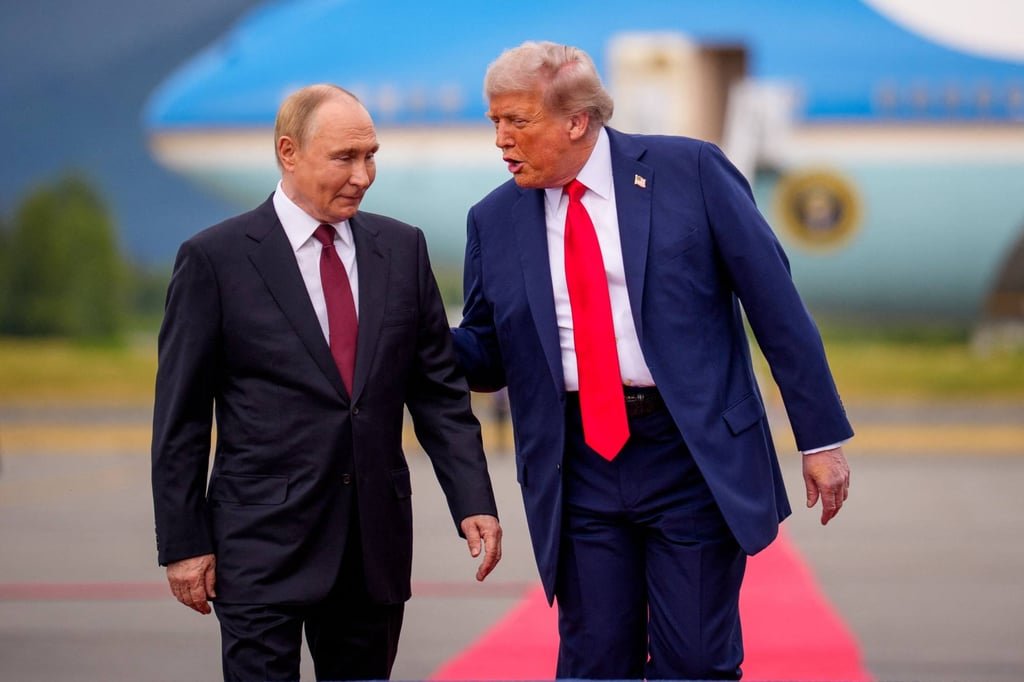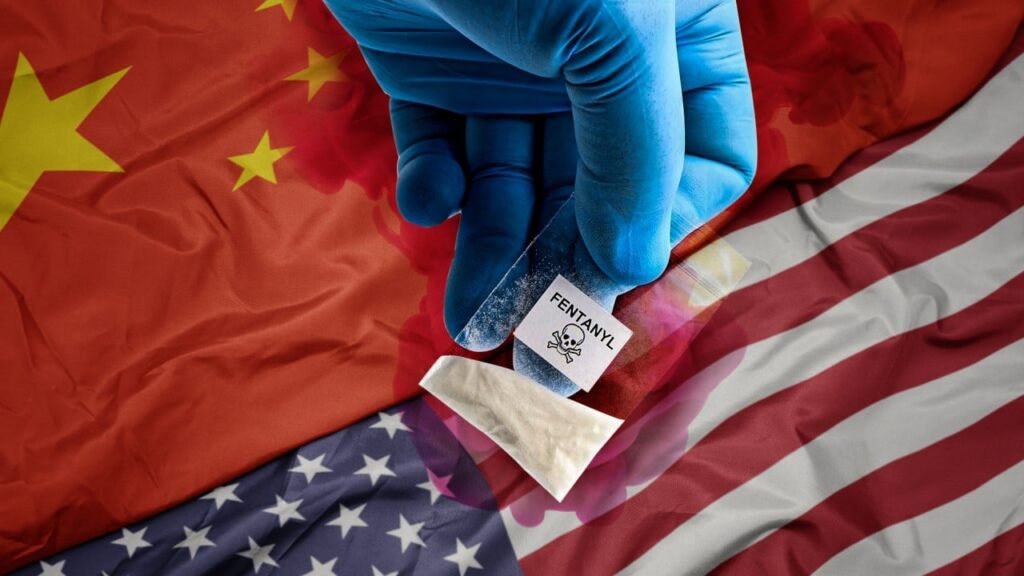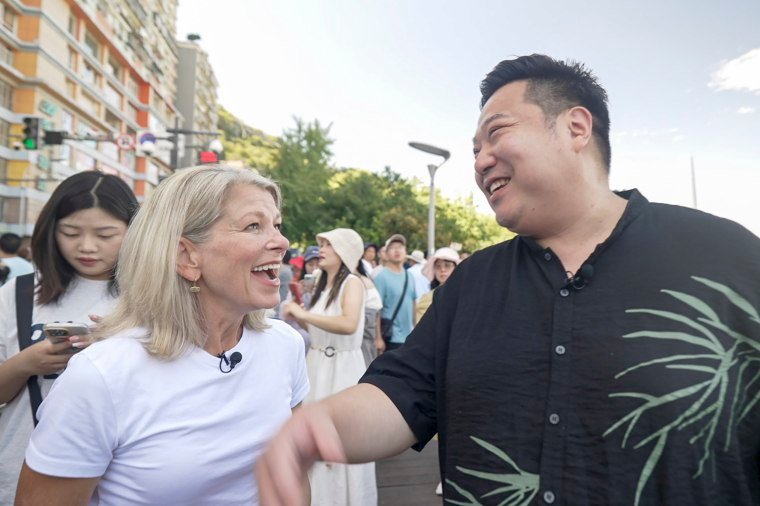The Chinese government is a technocracy with a deep backbench. About 40 percent of the Communist Party’s new Central Committee has some kind of technical background, ranging in fields from aerospace to artificial intelligence. It is remarkable what happens to decision-making when you are charged with the well-being of over one billion souls—assuming you take that charge seriously. And the Chinese government does. It sees climate change for what it is: a security threat that could wreak havoc on the Chinese social model and economy. But it is also an opportunity.
The crisis has caused China to become the world’s largest producer of solar cells, many of which are exported to other countries; it has also installed almost half of total world solar capacity within its borders. As a result of the massive supply, the cost of generating electricity from solar has now fallen to a global average of around $0.04 per kilowatt hour—making it the cheapest energy source in history. Right now, prices still vary across the world for a “conventional” kilowatt hour from the electric grid: if you’re in Russia you pay about $0.06 and in Ireland about $0.45, according to the data platform Statista. (FYI, a kilowatt hour is the energy you’d produce if you rode a stationary bike for about ten hours, in exchange for a $0.04 paycheck—not that the U.S. federal minimum wage is much better).
This cheap energy—or at least, the fact that China was responsible for it—has not been welcomed everywhere. In 2024, Janet Yellen, then-Treasury Secretary under President Joe Biden, called China’s push to expand its solar cell production unfair competition that “distorts global prices” and “hurts American firms and workers, as well as firms and workers around the world.” She delivered those comments at a shuttered solar plant in Georgia, which reportedly closed its doors in 2017 after cheap imports flooded the market. The European Union, too, is investigating whether China “unfairly” used subsidies to try and win bids to build a photovoltaic park in Romania.
Market competition may be central to our capitalist system (itself an unfair, warped economic arrangement), which means Yellen’s comments make some sense within today’s status quo. But she isn’t taking the long view: what good are free-market principles in a world where climate change has careened out of control? Things aren’t that bad yet, but the global community isn’t boosting confidence. According to Climate Action Tracker, not a single country is set to meet the goals of the Paris Climate Agreement. The 1.5°C limit on global warming agreed upon in the 2015 Paris agreement has become nothing more than a propagandistic rallying cry. Yet our greatest concern with solar power, according to Western governments, is whether or not we are adhering to fair competition. If that statement makes your BS alarm hoot, you’re not alone.
China is certainly spreading its influence throughout the world and securing resources in a way that is not always commensurate with human rights. But with solar power, Western countries have left a big hole for the Chinese to ride straight through. And we keep widening the berth.
China wasn’t always at the top of the green energy food chain. The global solar market got a big push from Germany in the late 1990s when a combination of entrepreneurship, research, and government subsidies established a new photovoltaic (PV) industry centered around Berlin and the former East Germany. Industry expansion followed, reaching about 20 percent of the world market by 2012. Right as the country reached its peak in solar manufacturing, the German government slashed the generous feed-in tariffs that private PV owners received for the electricity they produced. The rise in the number of solar arrays had caused government payouts for the tariffs to explode, and they were no longer willing to foot the bill. As a result, the German PV industry buckled under market pressure from cheaper products made in China and other Asian countries.
Although Germany is no longer a leader (or even a player) in solar cell production, the country is still installing solar panels at a healthy rate. After the 2012 decline, things picked back up in the 2020s and 16.2 gigawatts of solar power were installed in Germany in 2024, bringing the country’s total to 89 gigawatts. Pulling even with Japan, it now ranks fourth in the world in installed capacity behind India (98 gigawatts), the US (178 gigawatts), and, of course, China with a gargantuan total of 887 gigawatts (all as of 2024). Incidentally, about 95 percent of the solar panels installed in Germany were—you guessed it—made in China.
Despite Yellen’s ranting, none of the global economic and manufacturing realities of solar production are set to change soon. And not only because the Trump administration is anti-whatever-the-left-wants or because the EU seems content to let its domestic solar industry descend into obscurity. The success of clean energy consists of more than just installing solar panels. Strategies and infrastructure must also be in place to use the electricity in a way that replaces old, dirty technology.
This side of the energy transition could be going better. Trump’s election has done little to infuse the U.S. government with scientific prowess (though he is, like Hitler, a self-declared expert on the biological consequences of immigrant blood on our country.) The EU also has its challenges. Maybe Yellen should urge the Americans and the Europeans to actually prepare their grids and policies for cheap solar power, before finding reasons to complain about why it has become so cheap. The electrical grids of the future will have to conduct about 75 to 150 percent more electricity than today and be responsive enough to react to intermittent renewable energy sources. This requires new methods of energy storage and is a tall order for technology and lawmakers.
To hasten the transition to renewables, the EU is aiming to phase out carbon intensive activities through a cap-and-trade program called the EU Emissions Trading System, or EU-ETS. The program puts a price on greenhouse gases. It works by setting a cap on the amount of allowed emissions by issuing a set number of “emission certificates,” which can be bought and sold. A shrinking number of certificates for the emission of one ton of CO2 is meant to ensure that the carbon footprint of the EU steadily declines. Fortunately, the European Commission, a body respected far and wide for seldom holding its wetted finger aloft to assess opportune political winds, sets the number of available certificates. And though the EU’s credibility toward its commitment to climate protection was found in a recent study to be “exceptionally high,” the current price of carbon, at about $80 per tonne CO2, is still well short of an estimate of $190 for the social cost of carbon put out by the Environmental Protection Agency. In technical circles, I have heard estimates as high as $600. As recently as 2015, the price set by EU-ETS was still under $6 per tonne of CO2 before rising sharply between 2019 and 2022 due to proactive legislation.
However, the fall of the carbon price this year shows that prices are still affected by geopolitical events. The uncertainty, especially what happens after the current fourth phase of EU-ETS ends in 2030, has left clean energy bankrollers wondering whether they should invest in PEZ candy dispensers instead of renewable energy infrastructure (vintage Olive Oyl can go for over $400 on Ebay).
Despite the doubts, it is a cheerful sign that European political leaders still have a grip on reality—albeit a loosening one. Because across the Atlantic, Americans are drowning in debate on whether climate change is real and why more CO2 is good for plants. (It is. But we aren’t plants.) Led by Donald Trump (who received his PhD in chemistry from nowhere) and most of the Republican Party, the U.S. has exited the Paris Accords and financial support for renewables is on the chopping block, even while Republican representatives fully understand the boon future investments from Biden’s Inflation Reduction Act (IRA) would be for their states.
Under Biden, the U.S. took a different tack than the EU. Instead of regulation squeezing out carbon technology by making it more expensive, Biden’s IRA aimed to make hydrogen available for $2 per kilo by 2026 to alter the economics of energy. In this way, the IRA promoted technology openness. The reaction in the EU, particularly in Germany, was apprehension that the US had secured its place as the center of any future “green” hydrogen market, a market that would have required hundreds of terawatt hours of possibly domestic cheap solar power. Things seemed especially dire during the throes of the energy crunch after the Ukraine invasion. I attended a national energy conference in Berlin in September of 2022 where the alarm and anxiety were palpable.
Alas, none of it panned out. China is now the king—I mean, the 王—of solar. The EU is dependent on China, because if fluctuating carbon prices actually do succeed in phasing out carbon-intensive technology, the transition will continue to be driven by solar panels from the 王. And in the US, after a resurgence of the solar cell industry under the first Trump administration and in the wake of the IRA, the gutting of subsidies for renewables leaves the country little potential for producing cheap, clean power anytime soon. So if you want it in the States, you’ll also have to buy it from the 王. The US, itself a once-promising king of clean energy, has been reduced to a knave—or more likely a jester.
According to a fact sheet on whitehouse.gov, President Trump has ended, via executive order, “market distorting subsidies for unreliable, foreign-controlled energy sources.” Trump, making it sound like China has colonized the sun, seems to have acted because the left likes clean energy and not because he actually wants to promote American resources. The fact sheet, a strange pronouncement, is carefully worded:
Unleashing American Energy: President Trump believes in all forms of reliable, dispatchable1 energy, harnessing nuclear, fossil fuels, and emerging technologies to secure American energy independence and fuel economic growth.
Renewables are conspicuously absent. Let’s analyze. First, why fossil fuels are considered “reliable” is anybody’s guess. Just call the 1970s and ask anyone who suffered through the oil shocks. Second, Biden made hydrogen a strong American energy source, to the wonder and concern of the rest of the world. And third, what is an “emerging” energy technology anyway? Fusion? Bringing a black hole into orbit around Earth? No wait, I know: solar energy for $0.04 per kilowatt hour! As a matter of fact, it might already be available!
This year, Yellen has been regularly commenting on Trump’s tariff policies. Maybe she should comment on his energy policy as well. It’s not only China who may be manipulating the markets and injecting political poison; the EU and the US are distorting and/or losing the game in their own way.
One proposed solution to counter China is to focus on quality. A focus on quality is, after all, how Germany became the world’s export 王 , I mean export König. The EU is following this route by actively investing in research on high-tech solar cells such as back-contact cells, tandem cells, or a class of materials called perovskites. Whether the strategy will pay off is far from certain. These solar cells are either expensive or degrade easily; the road to $0.04 per kilowatt hour could be long and marred by washed out sections, potholes, or, most dangerously, right-wing governments.
In the end, despite decades of eco-protests and green political promises, it might be raw economic calculations that save us from devastating climate change. Personally, I’d rather buy a solar cell with an artificially deflated price than the alternative, like some fictive “emerging technology” developed at Trump University.
Does this mean solar energy will become part of China’s takeover of the world? I am a physicist, not a soothsayer, so I can’t tell you. But one thing is clear: while China is making political decisions based on scientific evidence and while it is flooding the market with cheap solar energy, the Western world is sinking in a quagmire of self-righteous debate consisting of right-wing lies and left-wing virtue signaling. We need to get serious about how China is offering a way to combat climate change. Take it or leave it, that fact is not going to change soon.
1 “Dispatchable” sources of energy are sources that are not intermittent like renewables are.









